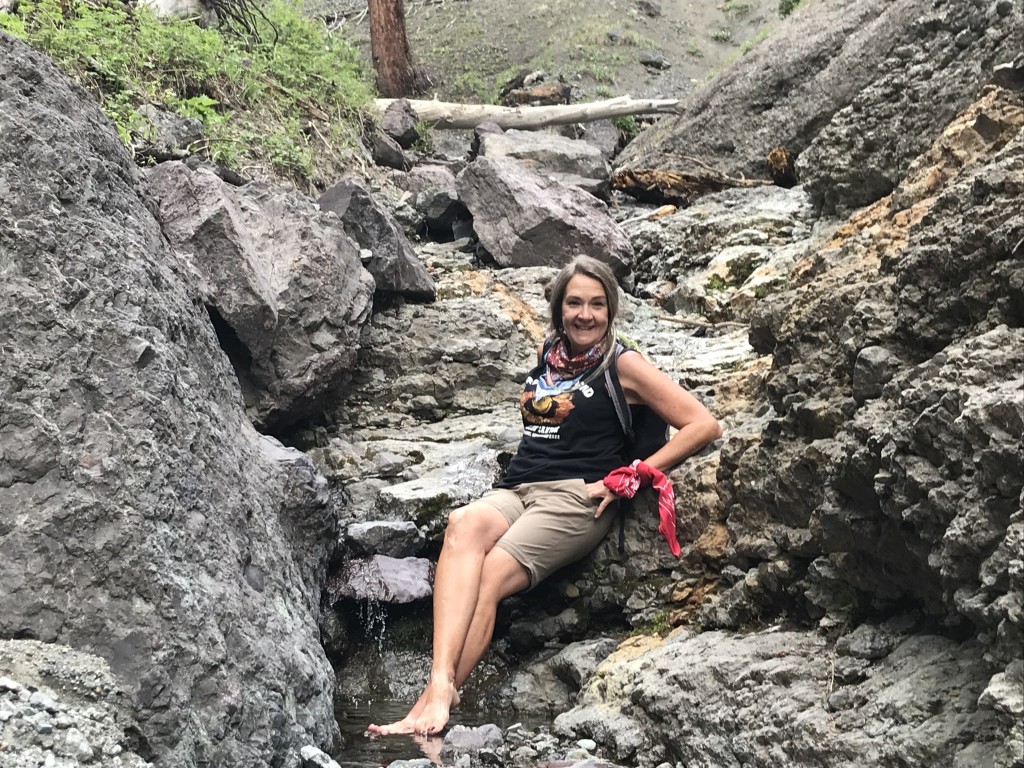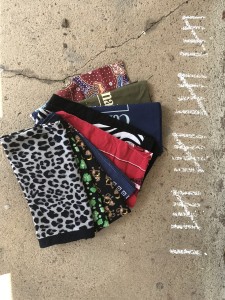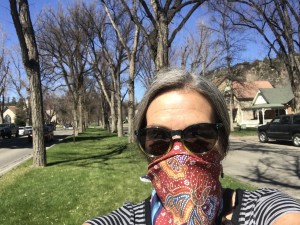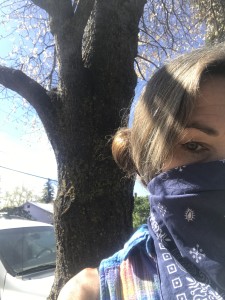First of all, using a bandana as a facemask is not a new idea. Cowboys have known this for a couple centuries. Nothing says the west more colorfully than a button up shirt, sweat-stained cowhide jacket and a red bandana. And yes, somewhere back in time I rode horses and I’ve been hot and dusty. I was a child born in the fifties to a mom who wore a bandana to keep every hair properly coiffed in the wind until she arrived at her destination be it church or office.
She called them bandanas. We called them scarves. They were not cowboy paisley. Rather, they were sheer and colorful and available in a rainbow of colors from the local five and dime. I hated them. Not because my mother wore them, but because she tried to get me to wear them. Bandanas were definitely not of my generation and they looked horrid with braids and later with my updated flip- until 1968 anyway. But I am really not averse to using these same rainbow scarves while dancing in worship – or in music and movement classes.
1968 saw the advent of the little three-cornered scarf, a sort of kerchief made of cotton print, designed to match a short cotton shift. These were worn by teenagers who were not really hippies, but not old-fashioned either. I made one of excess fabric when construction was complete on my home economics dress project. The shift and kerchief became my favorite outfit. The girl wearing it felt anything was possible because she finally looked like a modern woman. The shift was well-tailored, finished with detail and boasted a good fit. The kerchief, passing over the ears and tied under the curl of my pageboy haircut revealed just the smallest portion of earlobe. The mint green tiny floral print of the fabric contrasted nicely with formerly mousy brown hair and drew attention to the eyes. Alas, not even fabulous fashion trends last forever. Bandanas disappeared again before high school graduation save for those worn by the likes of Clint Eastwood and John Wayne on black and white TV.
Somewhere in the late eighties, bandanas made a comeback. My mother, of course, was still wearing the sheer variety. But outdoorsy folks were using them for a variety of purposes; towels, handkerchiefs, doo-rags; as they ran cross-country, camped, or rode motorcycles. Women used them for craft projects. I found a matching pair at a local discount store. They were bandanas with wide, fuchsia-pink borders and a black and turquoise floral center. These I purchased for a dollar a piece. I sewed them front to front fashioning a sleeveless pullover blouse. This minimal shirt looked great with my Levis 501s and chukka boots and was one of two outfits I wore on a 21-day motorcycle honeymoon across the continental US. There was also another bandana on the trip. Red. Harley-Davidson. Absolutely necessary. A wedding gift from an older friend. After learning a hard lesson about sunshine and windburn on day one, my red Harley-Davidson bandana protected my tender nose and cheeks for the remainder of the trip. It is the second oldest bandana remaining to this day in my collection.
The oldest bandana in my bandbox is from a place of work. In 1976-77 I sold women’s sportswear at a quality, Main Street, department store in the heart of Grand Junction. With my employee discount, I purchased from the clearance rack a wonderful, seventies-inspired button-up shirt which I wore until frayed and threadbare. A bandana of the same fabric came with the shirt. That bandana is my oldest and has remained my favorite for 47 years. It has passed from me to my daughter and back again and seen duty as a costume accessory, wardrobe scarf pulled through a ring, hiking must-have, and dresser scarf in both college dorm and cabin. Why do I love wearing my 15 bandanas collected over the years? Because I would rather tie on a bandana any day then negotiate my thick tresses to pinion the elastic of a facemask to my ears. Besides that, other daily hikers have referred to me as Jesse James – and it is nice to be a celebrity of sorts. At my age, you rock your vintage doo rags and take what attention you can get.




